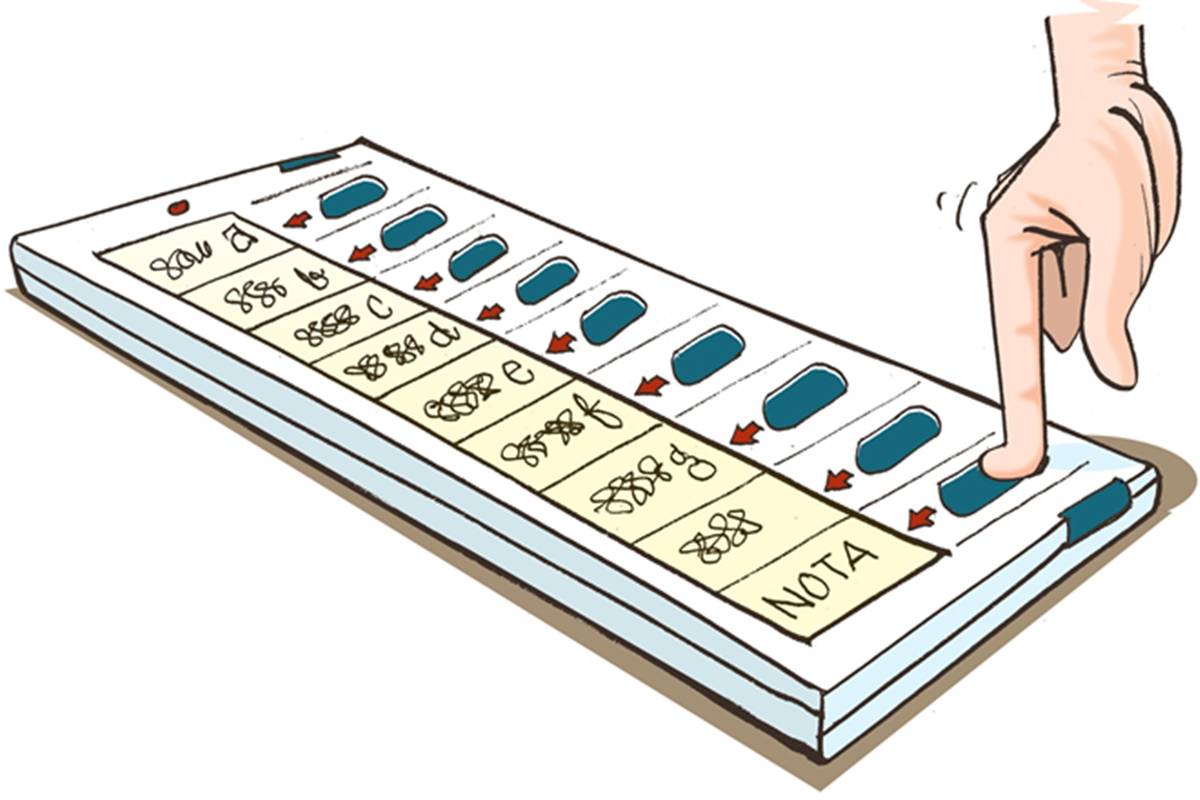Table of Contents
The term NOTA is stand for “None of the Above”. The option of NOTA provide option to the voters to officially register a vote of rejection or disapproval for all candidates who are contesting in an election. If a voter is dissatisfied with all candidates in the field, while taking participation in election process, through option of Nota he/she can reject all of them. NOTA indicates that the voter has not chosen to vote for any of the contestant of an election.
Objective:
The main aim to provide option of NOTA to voters is to enable them to exercise their ‘right to reject’ in case if they satisfied that the all candidates of election are not worthy for their vote. If voter don’t want to vote in favour of any of the contestant then he or she can use option of NOTA. The option of Nota is an ideal way to reject candidates rather than abstain from voting.
In India:
NOTA was introduced in India in 2013 after the landmark judgment of Supreme Court in the case of People’s Union for Civil Liberties v. Union of India. India became the 14th country to institute negative voting.
In 2009, the Election Commission of India told the Apex Court that it wished to offer the voter a “none of the above” option on ballots, which had generally opposed by the Government.
The Supreme Court in the case of People’s Union for Civil Liberties v. Union of India, observed that not to vote have been recognized under section 79(d) of the Representation of the People Act and Rules 41 (2) and (3) and 49(0) of the Conduct of Election Rules respectively. Section 79(d) of the Representation Act defines “electoral right” as the right of a person from being a candidate, to vote or refrain from voting at an election. Therefore, the Hob’ble Court held that “a positive “right not to vote” is a part of the expression of a voter in a parliamentary democracy and it has to be recognized and given effect to in the same manner as the right to vote.”
The court further observed that a voter may not vote at an election being dissatisfied with candidates in the field. To express his/her opinion, voter may be abstain from voting, which is not a good option for a responsible citizen. The court held that the electoral system of India should be to ensure the freedom of voters so that they can exercise their free choice. If a person is not allow to cast his vote, it will flagrant violation of Article 19 which guarantees right to speak, criticize and disagree on a particular issue to all citizens and the right ensured in Article 21, that is, the right to liberty. The court concluded that if NOTA button can increase participation in democracy, then nothing should stop it. “Non-participation causes frustration and disinterest, which is not a healthy sign of a growing democracy like India”
As per the instruction of Apex Court the Election Commission of India introduced a particular symbol which appears in the last panel on all Electronic Voting Machines for ‘None of the Above’ option to allow the voters to exercise NOTA.
GLOBAL APPROACH:
There are many countries which provide the option of NOTA or a blank vote to voters are France, Belgium, Greece, Brazil, Bangladesh, Colombia, Scandinavian countries, Spain, and Poland etc.
Ukraine: in Ukraine, the option of NOTA known as ‘Against all candidates’.
Russia: Russia had option of NOTA for voters, but it was abolished in 2006.
UK: In 2000, a political party named No Candidate Deserves My Vote was framed with the aim to introduce a bill in parliament to include the option of NOTA for voters in every election.
Pakistan: In the 2013 general elections, the Election Commission of Pakistan had first decided to give the NOTA option, but later scrapped the idea due to time constraint.
Rule 49-O of Conduct of Election Rules, 1961:
As per the Conduct of Elections Rules, 1961, if an elector, after his name has been registered and signature/thumb impression taken, decides not to record his/her vote, a remark “Refused to vote” is made against their name by the presiding officer. This was because ballot papers and EVMs currently do not have the option to not vote for anyone.
Need of the rule: The voter must be able to register a vote of disapproval/rejection if they are of the opinion that none of the contesting candidates deserve to be voted for.
Conclusion:
The option of NOTA provides an option to the voter to reject all candidates who are contesting in an election. It secures the rights of people to express their views on a particular issue and also helps people to take participation in the process of election which is essential for a successful democracy. The option of NOTA also help to keep a check on bogus voting as someone else will not be able to impersonate and vote in place of him in favor of any other candidate.
REFERENCES:
- People’s Union for Civil Liberties v. Union of India
- https://economictimes.indiatimes.com/news/elections/lok-sabha/india/what-is-nota/articleshow/68724703.cms?utm_source=contentofinterest&utm_medium=text&utm_campaign=cppst
Author: VIKAS KUMAR RATHOUR,
PSIT COLLEGE OF LAW, 2ND YEAR/ STUDENT

